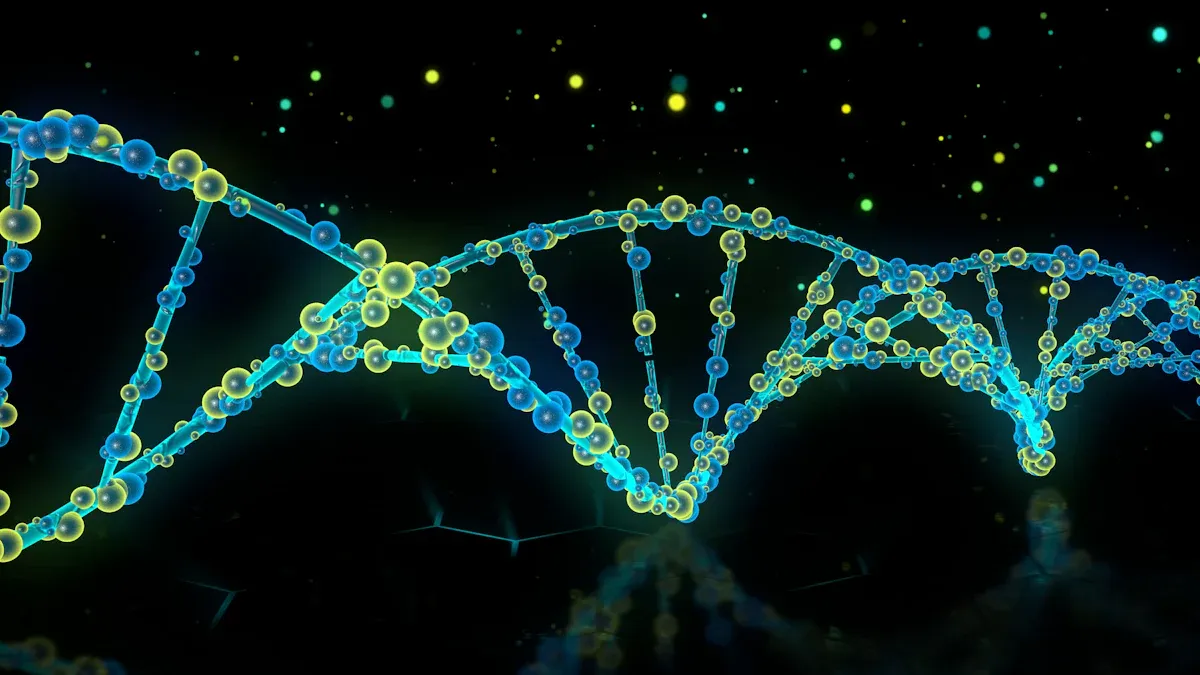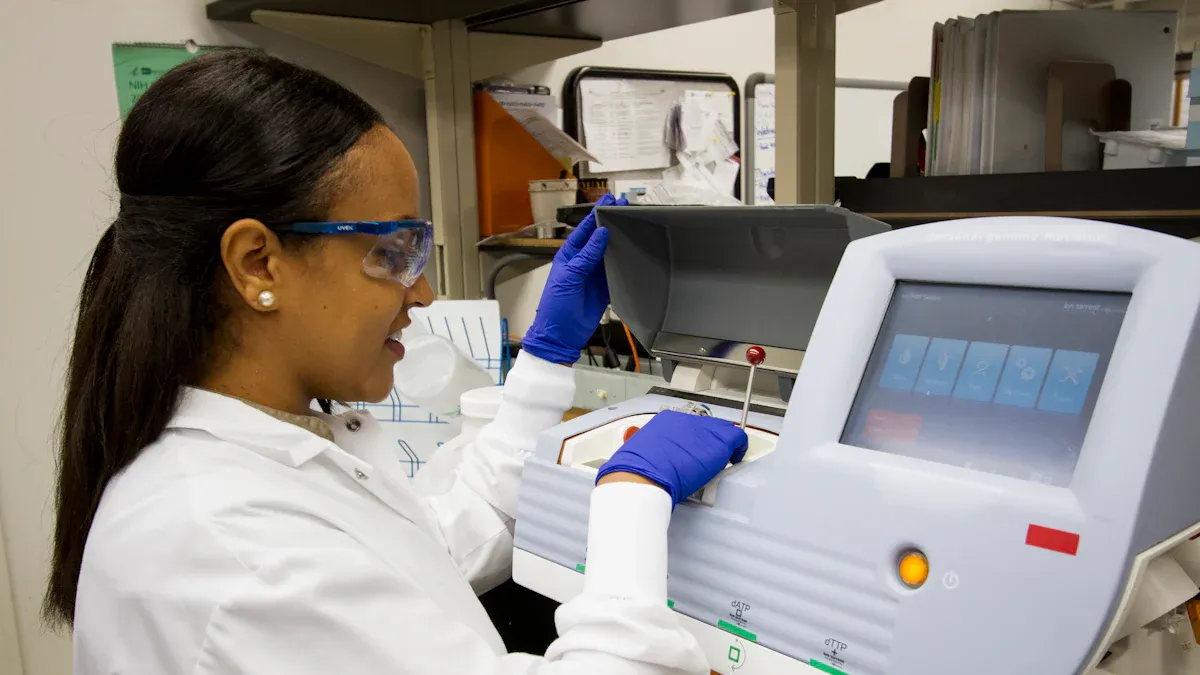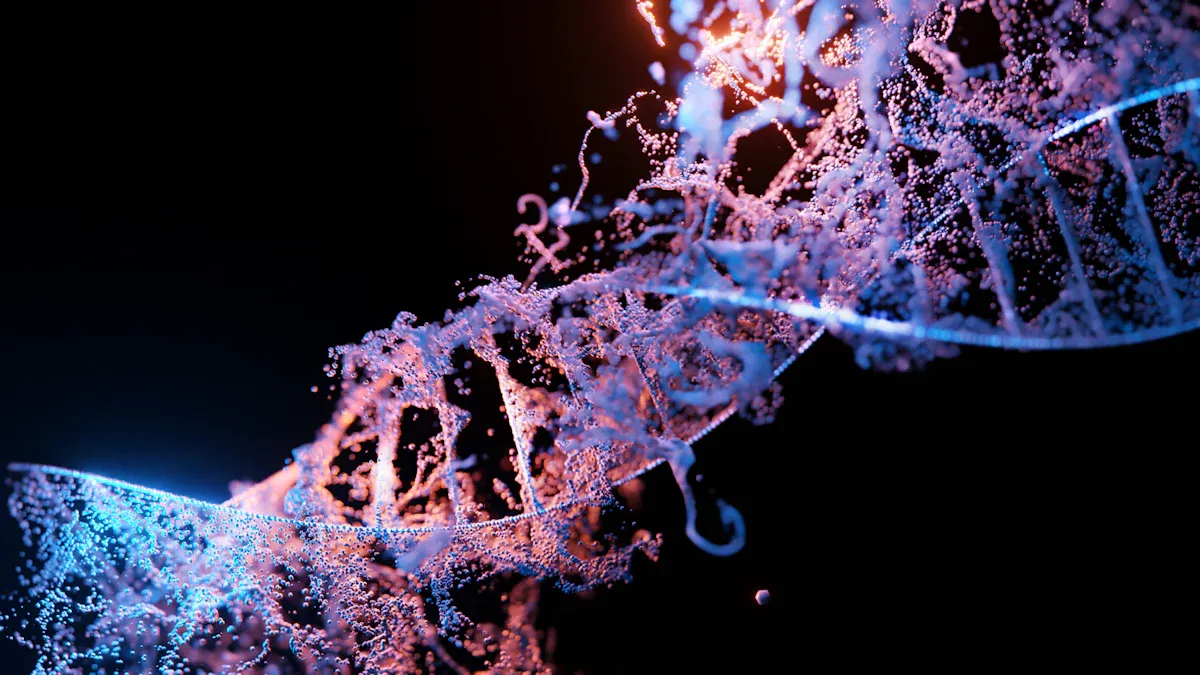What is Next-Generation Sequencing and How Does It Work

Next-Gen Sequencing: A Leap Forward in Early Detection has transformed the way scientists decode DNA and RNA. This advanced technology enables rapid and precise identification of genetic variations, which play a critical role in understanding diseases. Its application has significantly improved early disease detection rates. For instance:
Diagnostic efficacy increased with a pooled diagnostic odds ratio of 11.94.
A positive result from Next-Gen Sequencing indicates a 2.81 times higher likelihood of disease presence.
A negative result reduces the risk by 0.32 times.
These advancements make Next-Gen Sequencing: A Leap Forward in Early Detection, offering unparalleled diagnostic efficiency with an area under the curve of 0.85.
Key Takeaways
Next-Generation Sequencing (NGS) helps scientists study DNA and RNA faster.
NGS examines millions of DNA pieces at the same time.
It works quicker and costs less than older methods like Sanger sequencing.
This technology finds rare genetic changes, helping early diagnosis and custom treatments.
NGS is important for finding infections and improving baby health checks.
Learning about NGS helps people understand how genomics improves healthcare.
What is Next-Generation Sequencing?

Definition and Key Features
Next-generation sequencing (NGS) is a cutting-edge technology that allows scientists to decode DNA and RNA with remarkable speed and precision. Unlike traditional sequencing methods, NGS can process millions of DNA fragments simultaneously, making it a high-throughput approach. This capability has revolutionized genomics by enabling researchers to analyze entire genomes or transcriptomes in a fraction of the time.
Several key features make NGS stand out. It is highly cost-effective, reducing the expense of sequencing compared to older methods. The technology also delivers high-resolution data, which is essential for detecting genetic variations and mutations. Additionally, NGS is versatile, supporting applications in genomics research, clinical diagnostics, and even infectious disease studies. The ability to identify rare genetic mutations, such as those linked to cancer, further highlights its transformative potential.
Aspect | Description |
|---|---|
High Throughput | Processes millions to billions of DNA fragments simultaneously, increasing efficiency. |
Cost-Effectiveness | Reduces sequencing costs, making it accessible for more research. |
Speed | Decreases the time required to sequence entire genomes or transcriptomes. |
Data Resolution | Provides detailed insights into genetic variations and mutations. |
Versatility | Applicable to various fields, including genomics and clinical applications. |
Detection of Rare Variants | Identifies rare genetic mutations crucial for diseases like cancer. |
Why NGS is Transformative in Genomics
NGS has redefined the field of genomics by offering unparalleled speed, accuracy, and versatility. Traditional methods, such as Sanger sequencing, often required weeks or months to sequence a genome. In contrast, NGS can deliver results in days, enabling faster research and clinical decision-making. Its high-throughput nature allows researchers to analyze vast amounts of genetic material simultaneously, which was previously unimaginable.
The cost-effectiveness of NGS has also democratized genomics research. By significantly lowering the cost per base pair of sequencing, it has made advanced genetic studies accessible to more institutions and researchers. Furthermore, the technology's accuracy ensures reliable results, which are critical for identifying genetic variations that may influence health outcomes.
Advantage | Description |
|---|---|
High-throughput | Processes many DNA fragments simultaneously, enabling rapid sequencing. |
Cost-effectiveness | Reduces sequencing costs compared to traditional methods. |
Speed | Provides faster results than older sequencing techniques. |
Data resolution | Offers high-resolution data for detailed genomic analysis. |
Versatility | Supports diverse applications, from research to clinical diagnostics. |
Accuracy | Ensures reliable identification of genetic variations. |
Next-Gen Sequencing: A Leap Forward in Early Detection has proven to be a game-changer in genomics. Its ability to deliver fast, accurate, and cost-effective results has opened new doors for understanding genetic diseases and developing personalized medicine.
How Does Next-Generation Sequencing Work?
Library Preparation
DNA/RNA Extraction and Fragmentation
The first step in the NGS workflow involves extracting DNA or RNA from the sample. Scientists isolate the genetic material using specialized techniques to ensure purity and quality. Once extracted, the DNA or RNA is fragmented into smaller pieces. This fragmentation process is crucial because sequencing shorter fragments improves accuracy and efficiency.
Adapter Ligation and Indexing
After fragmentation, adapters are ligated to the ends of the DNA or RNA fragments. These adapters serve multiple purposes. They allow the fragments to bind to the sequencing platform and enable multiplexing, which means multiple samples can be sequenced in a single run. Indexing tags are also added during this step to differentiate between samples, ensuring accurate data analysis.
Clonal Amplification
PCR Amplification
Clonal amplification begins with polymerase chain reaction (PCR). This process amplifies the DNA fragments in the library, creating millions of identical copies. Amplification enhances the signal strength, making it easier to detect the genetic sequences during the sequencing phase.
Cluster Generation
Following PCR, the amplified DNA fragments are immobilized on a solid surface, such as a flow cell. Each fragment forms a cluster of identical copies. These clusters are essential for generating strong, detectable signals during sequencing. The clustering process ensures that the sequencing platform can read the genetic information accurately and efficiently.
Sequencing
Base-by-Base Sequencing
During sequencing, the platform reads the DNA fragments base by base. This step involves adding nucleotides one at a time while detecting the specific base incorporated at each position. The base-by-base approach ensures high accuracy, even for complex genomes.
Real-Time Data Generation
As the sequencing progresses, data is generated in real time. Advanced technologies capture the signals emitted during nucleotide incorporation and convert them into digital data. This immediate data generation allows researchers to monitor the sequencing process and ensures high-quality results.
The entire NGS workflow, from library preparation to sequencing, exemplifies why Next-Gen Sequencing: A Leap Forward in Early Detection has become a cornerstone of modern genomics. Its ability to process vast amounts of genetic material with speed and precision has revolutionized research and diagnostics.
Data Analysis
Bioinformatics Pipelines
Once sequencing is complete, the raw data undergoes processing through bioinformatics pipelines. These pipelines consist of a series of computational steps designed to convert raw sequencing reads into meaningful biological information. The process begins with quality control, where software tools assess the accuracy of the data and remove low-quality reads or contaminants. This ensures that only reliable data proceeds to the next steps.
Alignment follows quality control. During this step, the sequencing reads are mapped to a reference genome or assembled de novo if no reference exists. Specialized algorithms match the fragments to their corresponding locations in the genome, ensuring precise alignment. After alignment, variant calling identifies genetic variations such as single nucleotide polymorphisms (SNPs), insertions, deletions, or structural changes. These variations provide insights into genetic traits or potential disease markers.
Tip: Bioinformatics pipelines rely on powerful software like BWA, Bowtie, or GATK to handle large datasets efficiently.
Interpretation of Sequencing Results
Interpreting sequencing results transforms raw data into actionable insights. Scientists analyze the identified genetic variations to understand their biological significance. For example, they may determine whether a mutation is benign, pathogenic, or of uncertain significance. This step often involves comparing the results to databases like ClinVar or COSMIC, which catalog known genetic variants and their associations with diseases.
Visualization tools play a crucial role in interpretation. Graphical representations, such as genome browsers or heatmaps, help researchers identify patterns and correlations. These tools simplify complex data, making it easier to draw conclusions.
Interpreting results requires expertise in genomics and bioinformatics. Collaboration between researchers and clinicians ensures accurate conclusions, especially in clinical applications like diagnosing genetic disorders or guiding personalized treatments.
Data analysis bridges the gap between sequencing and meaningful discoveries. It transforms vast amounts of raw data into insights that advance research, diagnostics, and personalized medicine.
Next-Gen Sequencing: A Leap Forward in Early Detection

Comparison with Traditional Sequencing
Sanger Sequencing vs. NGS
Sanger sequencing, the first widely used DNA sequencing method, relies on chain termination to read DNA fragments. It provides accurate results but processes only one DNA fragment at a time. This limitation makes it time-consuming and costly for large-scale projects.
In contrast, Next-Gen Sequencing: A Leap Forward in Early Detection processes millions of DNA fragments simultaneously. This high-throughput capability allows researchers to sequence entire genomes in days rather than weeks. While Sanger sequencing remains useful for small-scale studies, NGS has become the preferred choice for comprehensive genomic analysis.
Feature | Sanger Sequencing | Next-Generation Sequencing |
|---|---|---|
Throughput | Single fragment at a time | Millions of fragments at once |
Speed | Weeks for large genomes | Days for large genomes |
Cost | Expensive for large-scale projects | Cost-effective for large datasets |
Advantages of NGS
NGS offers several advantages over traditional methods. Its speed and efficiency enable rapid data generation, which is crucial for time-sensitive applications like disease diagnostics. The technology also provides higher resolution, allowing researchers to detect rare genetic mutations with precision. Additionally, its cost-effectiveness makes it accessible for a wide range of studies, from academic research to clinical applications.
Applications in Early Disease Detection
Identifying Genetic Mutations
Next-Gen Sequencing: A Leap Forward in Early Detection excels at identifying genetic mutations linked to diseases. For example, it can pinpoint mutations in cancer-related genes, enabling early diagnosis and targeted treatments. Researchers also use NGS to study hereditary conditions, improving genetic counseling and risk assessment.
Infectious Disease Diagnostics
NGS plays a vital role in diagnosing infectious diseases. It identifies pathogens by sequencing their genetic material, even in cases where traditional methods fail. This capability has proven invaluable during outbreaks, such as COVID-19, where rapid and accurate pathogen detection was essential.
Prenatal and Newborn Screening
NGS has revolutionized prenatal and newborn screening. It detects genetic abnormalities in fetuses and newborns, allowing early intervention for conditions like Down syndrome or cystic fibrosis. This early detection improves outcomes and provides families with critical information.
Note: The versatility of NGS ensures its application across various fields, making it a cornerstone of modern diagnostics.
Next-generation sequencing (NGS) follows a structured workflow that includes library preparation, clonal amplification, sequencing, and data analysis. Each step ensures accurate and efficient decoding of genetic material.
NGS surpasses traditional sequencing methods in speed, cost-effectiveness, and data resolution. Its ability to process millions of DNA fragments simultaneously makes it a preferred choice for large-scale genomic studies.
Key Insight: NGS has revolutionized early disease detection by identifying genetic mutations, diagnosing infections, and enabling personalized medicine. Its transformative impact continues to shape the future of healthcare and genomics.
FAQ
What is the difference between NGS and traditional sequencing methods?
NGS processes millions of DNA fragments simultaneously, while traditional methods like Sanger sequencing analyze one fragment at a time. This makes NGS faster, more cost-effective, and suitable for large-scale projects.
How accurate is next-generation sequencing?
NGS provides high accuracy due to its base-by-base sequencing approach. Advanced bioinformatics tools further enhance reliability by filtering out low-quality data and identifying genetic variations with precision.
Can NGS detect rare genetic mutations?
Yes, NGS excels at detecting rare genetic mutations. Its high-resolution data output allows researchers to identify even low-frequency variants, which are often missed by traditional sequencing methods.
What are the limitations of NGS?
NGS requires advanced equipment and expertise in bioinformatics for data analysis. The initial setup cost can be high, and the technology may generate large datasets that demand significant computational resources.
How does NGS contribute to personalized medicine?
NGS identifies genetic variations that influence individual responses to treatments. This information helps clinicians tailor therapies to a patient’s genetic profile, improving treatment outcomes and reducing adverse effects.
Tip: NGS is a powerful tool for research and diagnostics, but proper training and resources are essential for its effective use.
See Also
Exploring Extragonadal Germ Cell Tumors And Their Formation
Simplifying The Basics Of B-Cell Prolymphocytic Leukemia
Anaplastic Large Cell Lymphoma: Definition And Treatment Options
Key Characteristics Of Glioblastoma: A Comprehensive Overview
Essential Information About Ganglioneuromas You Need To Know
